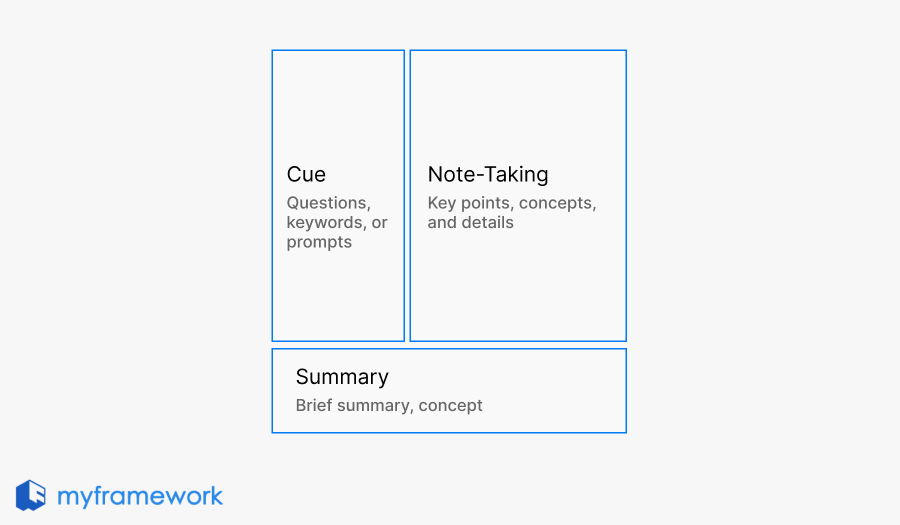A structured note-taking method that improves comprehension and recall through cue, notes, and summary sections.
What Cornell Note-Taking System Is About
The Cornell Note-Taking System is a highly effective method for organizing and reviewing notes, developed by Dr. Walter Pauk at Cornell University in the 1950s. It’s designed to enhance learning by focusing on summarization, active recall, and review.
This system is widely used in education and can also be adapted for various professional contexts, such as meetings or lectures, to improve knowledge retention and clarity.
How it Works
Divide the paper into Three Sections:

Note-Taking Area
The larger area on the right. This is where you take detailed notes during class or a lecture.
During the lecture or reading, write down key points, concepts, and details there. Focus on understanding rather than transcribing everything.
Cue Column
A narrow column on the left. This is where you write key terms, questions, or main ideas after your note-taking.
Immediately after the session, fill out the Cue Column with questions, keywords, or prompts that correspond to the material you’ve written in the Note-Taking Area. These should be cues that will help trigger your memory or facilitate self-testing.
Summary Section
At the bottom of the page, leave a space for writing a brief summary of the content after the lecture or study session.
Summarize the main points and concepts in your own words. This helps reinforce the material and aids in review later.
In Review
Periodically review your notes by covering the Note-Taking Area and testing yourself with the questions or keywords in the Cue Column.
Use the Summary Section to refresh your memory and deepen understanding by recalling the main ideas.
Benefits of the Cornell System
Active Learning: By summarizing, questioning, and reviewing, you actively engage with the material, improving retention.
Efficient Review: The Cue Column and Summary Section make it easier to quickly review key points and test your understanding.
Clear Organization: The format keeps your notes structured, making it easier to follow and find information later.





